Hardware Point Of Sales System Capstone Project Document
Introduction
The point of sale (POS) is the time and place where a retail transaction is completed. At the point of sale, the merchant would calculate the amount owed by the customer and indicate the amount, and may prepare an invoice for the customer (which may be a cash register printout), and indicate the options for the customer to make payment. It is also the point at which a customer makes a payment to the merchant in exchange for goods or after provision of a service. After receiving payment, the merchant may issue a receipt for the transaction, which is usually printed, but is increasingly being dispensed with or sent electronically.
The point of sale is often referred to as the point of service because it is not just a point of sale but also a point of return or customer order. Additionally, current POS terminal software may include additional features to cater for different functionality, such as inventory management and financials.
Businesses are increasingly adopting POS systems and one of the most obvious and compelling reasons is that a POS system does away with the need for price tags. Selling prices are linked to the product code of an item when adding stock, so the cashier merely needs to scan this code to process a sale. If there is a price change, this can also be easily done through the inventory window. Other advantages include ability to implement various types of discounts, a loyalty scheme for customers and more efficient stock control.
Background Of The Study
Hardware is owned by Emma C. Yu. The business operation started 3months ago, it is specifically on September 15, 2016. Hardware is located at the Blk. 1 Lot 2 Escala Road, Brgy. Estefania, Fortune Towne Bacolod City. It currently has 6 competent employees working hard to deliver quality service for their customer. Hardware started from a small business. That time they only sell few items had a limited supplier and use a manual cash register. Driven by passion to succeed in maintaining regular and suppliers.
The company is currently using manual sales register. The cashier notes down the invoice manually. Otherwise calculate the amount purchase by the customer and provide options for the customer to make payment. Since technology is evolving fast, Hardware desires to improve their daily transactions efficiently and thereby project service quality.
Statement Of Objective
Hardware Point of Sales intend to create a system that is capable to:
- ) Monitor the in and out of products and materials.
- ) Determine the product cost through assumed inventory statement.
- ) Restrict access to the unauthorized personnel.
- ) Generate invoices and sales report automatically upon a request.
- ) Store and review daily transactions.
Conceptual Framework
The Conceptual Framework shows the flow of system and how the data will be processed. It starts when the admin or employee opens the website. The admin will log in into his/her account and do the activities he intends or is directed to do like generate cash or charge invoice , purchase order for the supply ,database maintenance add,update,delete) just generate reports. When the employee log in to his/her account, he/she is limited to the authority of generating cash or changing and browsing the database.
Scope And Delimitation Of The Study
This study will focus on the point of sales system for HARDWARE. Below specifies the scope and Delimitation of the study.
Scope
- Access the database.
- View the product inventory.
- Add new products and update product details.
- Add new product brand, update or remove product brands.
- Add new product category, update or remove product categories.
- Add new employee, update or remove employees details.
- Add new supplier, update or remove supplier details.
- Generates cash invoice, receive cash from customers, calculate the change and print receipts.
Delimitation
- Can only record receipt of code transactions.
- Cannot utilized credit/debit card based transaction.
- The system cannot or is not capable of accepting bar code based.
Significant Of The Study
- The study will be beneficial to several individuals, groups and organization as it may be a process from which learning maybe obtain or the result of which may be utilize as reference and model for the developing the system. The problem, objectives, methods and results in this undertaking may be useful to identified beneficiaries.
- The company, HARDWARE Point of Sale System. This study will be significant to HARDWARE in such a way that they will find it easy to compute sales, product price and product availability. This study may help the firm in identifying solution for developing its competitiveness by delivering each easy, fast and reliable transaction.
- The Clients/Customers, the result of this study will provide them assurance of fast and accurate services.
- The researchers, the study will develop the researcher’s skills particularly in programming and gain self-confidence in dealing with professional people in the industry.
- The Students and academe, the study may serve as reference for researchers on the related study. The problems, procedures or methodology and the findings and recommendation of the study can be a basic or reference for developing or upgrading a study. The mentioned portion of the study will likewise be utilized by the same beneficiaries for the literature review. On the other hand copy of the study to be archived to the library, would enrich reference materials of the academe.
Definition Of Terms
- Inventory – a complete list of the things that are in a place. Operationally, it is a table consisting of products available in store.
- Programming – the act or job of creating computer programs.
- Maintenance – the upkeep of property or equipment.
- Stocks – the supply of goods available for sale in a store.
- Transaction – the act of process of doing business with another person or company.
- POS (Point of Sales) – is the time and place where a retail transaction is completed. This definition also serves as the operational definition of the study.
- Reports – an official document that gives information about a particular subject.
- System – a group of related parts that move or work together. This definition also serve as the operational definition of the study.
- Database – Is a distinct piece of information, usually formatted in a special way. Operationally, it is the consisting tables in the system and consisting of records stored.
- Inquiry – a request for information.
- Delivery – the act of taking something to a person or place.
- Security – the state of being protected or safe from harm.
- Staff – a group of people who work for a business.
- Purchase – to get something by paying money for it.
- Order – a product that someone has requested from a business.
- Supplier – to provide someone or something that is needed or wanted.
- Warehouse – designed for the loading and unloading of goods.
Review of Related Literature
This chapter includes a compilation of related topics and studies that are relevant to HARDWARE Point of Sale System.
Local Studies
- Walmart Store
Walmart Stores feature a great selection of high-quality merchandise, friendly service and of course, Every Day Low Prices. Founded in January 2000. Walmart developed a point of sale, POS system that completely unifies the concept of supply and demand. In Walmart stores, when something is bought, it is registered in a cash register, which is also connected in a corporate purchasing headquarters. When a sale is made this means there is one fewer product of that type on the shelf. When the signal is received at the purchasing office that an item has been sold it immediately orders the purchase of another one for re- supply. In this way Walmart has reduced bureaucracy, as purchasing orders are done automatically relative to items being bought at the POS.
- Calea POS
Calea POS system made their daily transactions fast and easy. Customers enjoy the doles of point of sales program as the system is a responsible for more customer-oriented services for any type of business. Their POS have staff management features such as sales tracking for each employee, commission totals, forecasted sales and top employee based on sales.
Foreign Studies
- pcAmerica Point of Sale System
Grocery stores are usually the busiest types of businesses. It is hard to fight against the long lines of people who are itching to be checked out fast. Cash Register Express POS System has all the necessary ingredients to not only check out the customers quickly, but to track each item being sold. Even in a multi-user environment. Cash Register Express is known for its stability on the network.
Cash Register Express has been designed with a revolutionary technology for bulletproof network performance with its Enterprise edition. This special edition of Cash Register Express allows the server to go down while all stations remain working. When you get the server up and running again, the stations will synchronize all the data. You will not ever have to worry about your system going down.
A typical point of sale system for a grocery store should include a Dell small form factor computer, cash drawer, pole display, receipt printer and laser bar code scanner or in counter scanner/weight scale. The pole display will inform your customers how much they are paying so they are likely to have the cash out quickly. A laser bar code scanner with built in scale aggressively scans bar codes that might be on bags or around bottles and quickly adds the item to the invoice as well as weighing item that need to be weighed. All these devices help to reduce the time it takes to process a customer and as any store owners knows, the faster you process your customers, the faster you make money.
Related System
Synthesis
The system that were showcase in the related studies both foreign and local, where all formed to automate the manual cash register into a POS System. It also shows in the features are available on the system and features which is not available to others.
Clearing over the related system reviewed above, the proponents have noticed that all of those POS System use instead barcodes. As observed, others were in capable of did not restrict the access to the unauthorized personnel and generating sales report.
Therefore, the proponents considered to integrate the features that were lacking in the system reviewed for the present system to gain dominance, making it more likely to be useful to the company.
System Architecture:
Figure 3 shows the structural design of the system wherein the employee or cashier can browse the database and can generate invoice. Then if the admin opens the website he can generate reports, purchase order for the suppliers and can manage databases.
Methodology
This chapter introduces the research strategy and techniques applied in this research.
The proponents followed the standard software development life cycle (SDLC), to describe and present solutions for the problems identified in this study, using the prototype model.
In this model, the stages have some overlap, meaning that there were many tasks that happen concurrently. This overlap allowed for some back tracking to incorporate changes to requirements based on what is learned during the development stage. The need of following and selecting a formal process for software development is to offer desired discipline to deliver a better quality product for success of business and to avoid wastage of money and time in developers. A software development process are as follows: Planning, Analysis, Design, Development, Testing, Implementation, and Maintenance phases.
Planning Phases
This research found out that Hardware is using manual inventory and possibility of loss of records and also the products in the inventory. The capability of the management to sell and record the product at the shortest period of time of the transaction needed.
Analysis Phase
This research study utilize interview method to gather the relevant data to determine what the limitation of the current needs of Hardware.
Design Phase
The proponents will use desktop computer , with windows 7 up to Windows 10 as the operating system for the development of the system. Sublime Text as the text editor for using PHP as the markup language. CSS is used for the design development, in order to make the system looks presentable for the user. For the server side scripting language, the proponents will use MySql for the database storage.
Development phase
The researchers used the software design for developing the codes to create the system, following the design and functions identified in the system specifications.
Testing Phase
Testing phase occurs as part of development process. The researchers tested the input and output of the system to determine if the system functioned correctly.
Implementation Phase
This is the phase of the project where the developed system of the researchers is already done and the documentation of the study is written. It will be deployed for the trial period of one year in the school to assess its effectivity.
Maintenance Phase
Continued maintenance and support is addressed in this phase. Suggestions made by the users of the system will be considered for its development. This process provides the ongoing maintenance of the system and improve some bugs that occur in the system.
Population of the Study
The primary target population of the study were the management including the cashier and the other helpers of Hardware. Although it is the only branch of the company they can surely benefit from the system.
Users Acceptance Survey
The system underwent user acceptance testing by the users of the system: the administrator and the cashier.
Requirement Specification
Operational Feasibility
Basically, the goals of the system were to develop the following functionalities, this system provides an organized system which allows the administrator and the cashier. With that said, the system will surely be beneficial to the company.
Program Environment
Front End
The front end is the interface between the user and the system. The front end is the one responsible for collecting the input data from the user and then processing it so that it completes the request that the user has made. In this study, the proponents use PHP as the main scripting language, while HTML and JAVASCRIPT for providing user interface of the system. As for the design the proponents use CSS style codes.
Back End
The back end is the “server-side” scripting codes that reside in the server. In this study, the researchers use PHP as the server side scripting language which serves as the middle ware and MySql for the database.
Technical Feasibility
Hardware Specifications (Minimum Requirements)
CLIENT:
- Intel Core i3 Duo 2GHz Processor
- 2GB of RAM
- Computer Mouse
- Computer Keyboard
- Monitor Capable of 1024x768px
- Modem Router
- UPS
- Ethernet Cable
- POS Receipt Printer
Minimum:
- Intel Core2 Duo2 GHz Processor
- 1GB of RAM
Software Specification (Minimum Requirements)
CLIENT:
- Linux Mint 17.1 Operating System; or Windows 7 (or later) Operating System
- Google Chrome Version 6.3.2, Internet Explorer 11; or Mozilla Firefox 37.0
- Apache
SERVER:
- XAMPP
System Architecture
Figure 3: System Architecture
This figure shows the system layout of the researched system. The Administration can only choose who can access the system. The system can use by the hardware.
Feasibility Schedule
The feasibility schedule contains the record of the amount of time the proponents spent on the system.
FIGURE 4: GANTT CHART
Cost Benefit Analysis
Cost Benefit Analysis or CBA estimates and sums up the equivalent money value of the benefits & costs of the system in order to determine whether it is profitable or worth the investment.
Table 2: Developmental Cost
Cost TOTAL
Ethernet Cable Php 5.00 / meter 100.00(20 m)
Modem Router Php 2,000.00 2,000.00
UPS Php 3,000.00 6,000.00
Computer Set Php 23,990.00 47,980.00(2 sets
Of Computer)
Programmer
System Analyst
Table 3: Operational Cost
Cost TOTAL
Electricity Php 5,000.00/month 60,000.00
Ink Php 1,000.00/month 12,000.00
Thermal Receipt Php 500.00 /month 6,000.00
Paper
Personnel Php 44,250.00/month 44,250.00
POS Receipt Printer Php 7,000.00/month 7,000.00
Programmer Php 5,000.00/month 60,000.00
System Analyst Php 5,000.00/month 60,000.00
Table 4: Benefit
Estimated Increase of Order/Income per year 393,000.00
TOTAL Cost 393,000.00
Table 5: Total Cost
Development Cost Php 56,080.00
Operational Cost Php 249,250.00
TOTAL COST Php 305,330.00
The Developmental Cost table the total amount of the system. While the Operational Cost table features the sum of the company’s expenses in a year. The Benefit table displays the possible amount that the company 4may obtain if the system is going to be implemented. Since the company, Hardware , aquires an income of more than Php 400,000.00 each year.
The Benefit table displays the possible amount that the company may obtain if the system is going to be implemented. Since the company, Hardware acquires an income of more than Php 3,000,000.00 each year. It is presumed that it would at least gain an additional Php 393,000.00 if the system is implemented.
Cost Benefit Analysis
Figure 5 shows a chart of the cost and benefit analysis. The payback period came out as 1.26. the proponents divided the company’s initial investment to the presumed Php 393,000.00 benefit that the company and multiplied the quotient of 12. Resulting to 1.26 which is round to 6, make it 6 month payback period.
Payback period = Initial Investment/ Cash inflow.
The ROI or Return of Investment was computed by taking the amount the system benefit, subtracting it to the total cost. The quotient is equivalent to 99.9% and rounding off to 100% of ROI (Return of Investment). The formula that the proponents used can be seen on Figure 5.
Entity Relationship Diagram
Figure 6 shows the data flow structure that is implemented on the system. An entity-relationship model or the ER model describes inter-related things of interest in a specific domain of knowledge. An Entity-Relationship Diagram is composed of entity types which classify the things of interest and specifies relationships that can exist between instances of those entity types.
Data Flow Diagram
Figure 7 shows the data flow of the researched system. The administration can manage who can login the system and who can use the system.
Data Dictionary
Presentation, Analysis and Interpretation of Data
This chapter presents the tabular result of the User’s Survey and the corresponding interpretations conducted for the system.
Figure 8 shows the result from the user’s acceptance survey where is thirty respondents have been tested. Each of the categories was computed. Each computed arranged were created tables below precisely showcase each categories mean.
Table 18: Survey Result – Effectiveness
Total Verbal Interpretation
Mean
_______________________________________________________________________ (1) 4.22 Very Satisfied
Effectiveness
_______________________________________________________________________
Table 18 shows that the survey result for the effectiveness of the system’s gathered with the total mean of 4.22 which is interpreted that the user were very satisfied with the systems, effectiveness after testing it.
Table 19: Survey Result – Efficiency
Total Verbal Interpretation
Mean
________________________________________________________________________
(2) 4.31 Very Satisfied
Efficiency
________________________________________________________________________
Table 19 shows that the user result for the system gathered a total mean of 4.32 which interpreter which is interpreted that the user were very satisfied with the systems, efficiency after testing it.
Table 20: Survey Result – Quality
Total Verbal Interpretation
Mean
_____________________________________________________________________
(3) Quality 4.283 Very Satisfied
______________________________________________________________________
Table 20 shows that the user result for the system gathered a total mean of 4.283 which interpreter which is interpreted that the user were very satisfied with the systems, quality after testing it.
Table 21: Survey Result – Timeliness
Total Verbal Interpretation
Mean
______________________________________________________________________
(4) 4.22 Very Satisfied
Timeliness
______________________________________________________________________
Table 21 shows that the user result for the system gathered a total mean of 4.22 which interpreter which is interpreted that the user were very satisfied with the systems, timeliness after testing it
Table 22: Survey Result – Productivity
Total Mean Verbal Interpretation
__________________________________________________________
(5) 4.32 Very Satisfied
Productivity
___________________________________________________________
Table 22 shows that the user result for the system gathered a total mean of 4.32 which interpreter which is interpreted that the user were very satisfied with the systems, productivity after testing it.
The overall system acceptance result, gathering a mean score of 4.31, it suggest that the user were very highly satisfied with its performance in all its aspects.
Summary of the Findings, Conclusions and Recommendations
This chapter presents the summary of the research work undertaken, the conclusions drawn and the recommendation made as an outgrowth of this study.
Summary of the Findings
This study was conducted for the purpose of making an easier,
faster, reliable and more efficient automated Point of Sale System. The descriptive method of research was utilized and the survey technique was used for gathering data.
The proponents conducted a survey focusing on the company’s transaction on daily basis. There were 30 respondents including 1 manager, four employees and 25 customers who took the test. The survey was conducted after the system had incorporated all the requirements needed.
The findings revealed that on the level of users experience in terms of effectiveness sum earning a mean of 4.22, was interpreted ”
Very Satisfied”. As to the level of users experience towards the efficiency of the system, it received a mean score of 4.31, which is interpreted as “Very Satisfied”. For timeliness the users gave in a mean of 4.27, which is interpreted as “Very Satisfied”. A lastly in the aspect of productivity, the users gave it mean score of 4.32, interpreted us “Very Satisfied”.
Conclusion
To sum everything up, the proponents conclude that the system is fully functional. The developed system provided the user the ability to monitor the in and out of products and materials and determine the product cost through assumed inventory statement. The said system is capable unauthorized personnel, generate invoice and sale reports; store and review daily transaction; monitor the inventory status accurately; and lastly accept product return and update the inventory.
Moreover, the proponents conclude that the system is able to demonstrate the required stability and reliability in a networked environment.

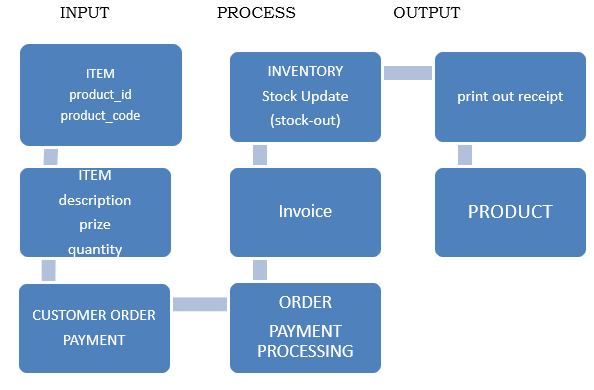

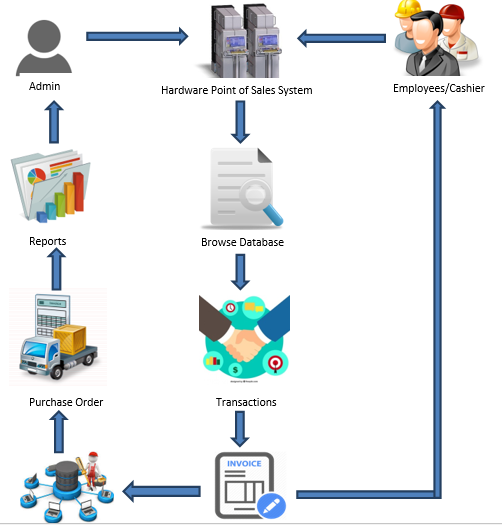

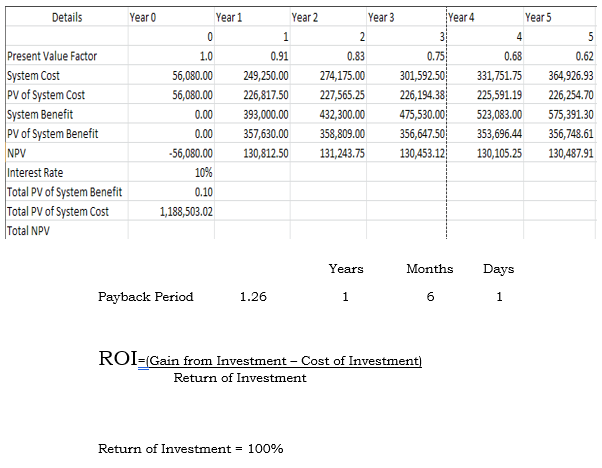

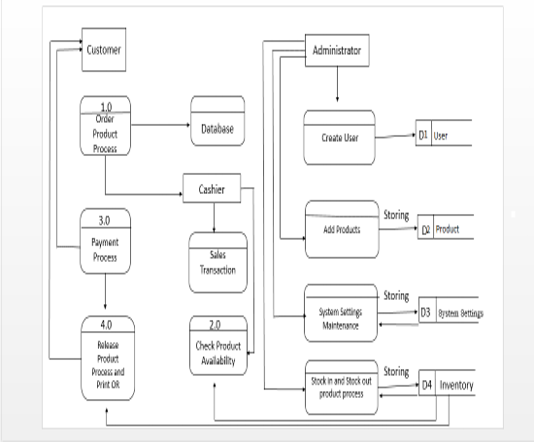
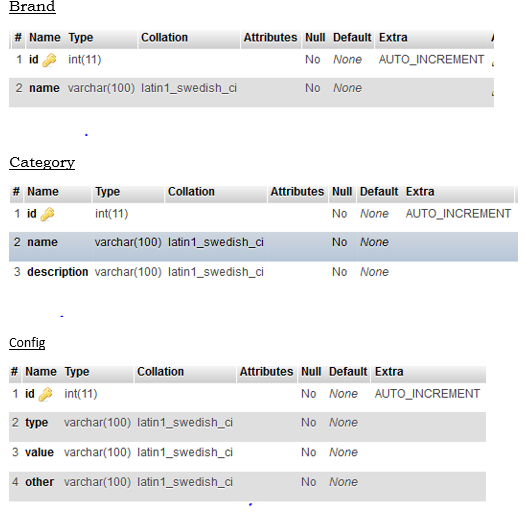

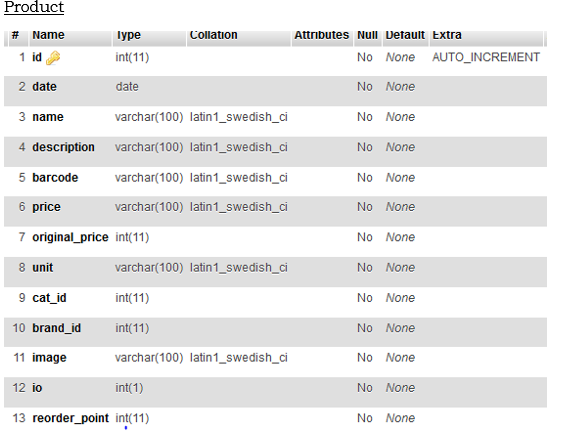
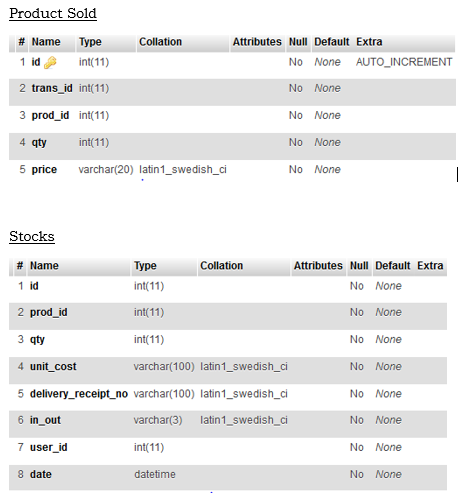
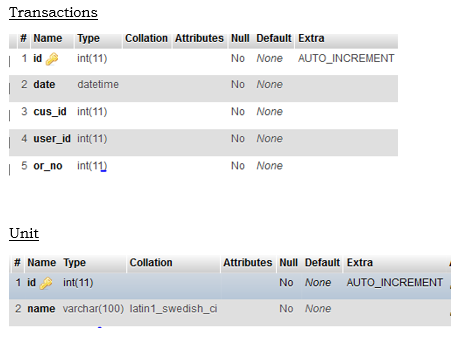
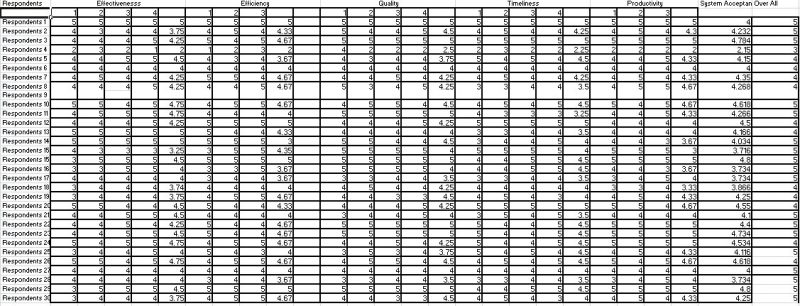
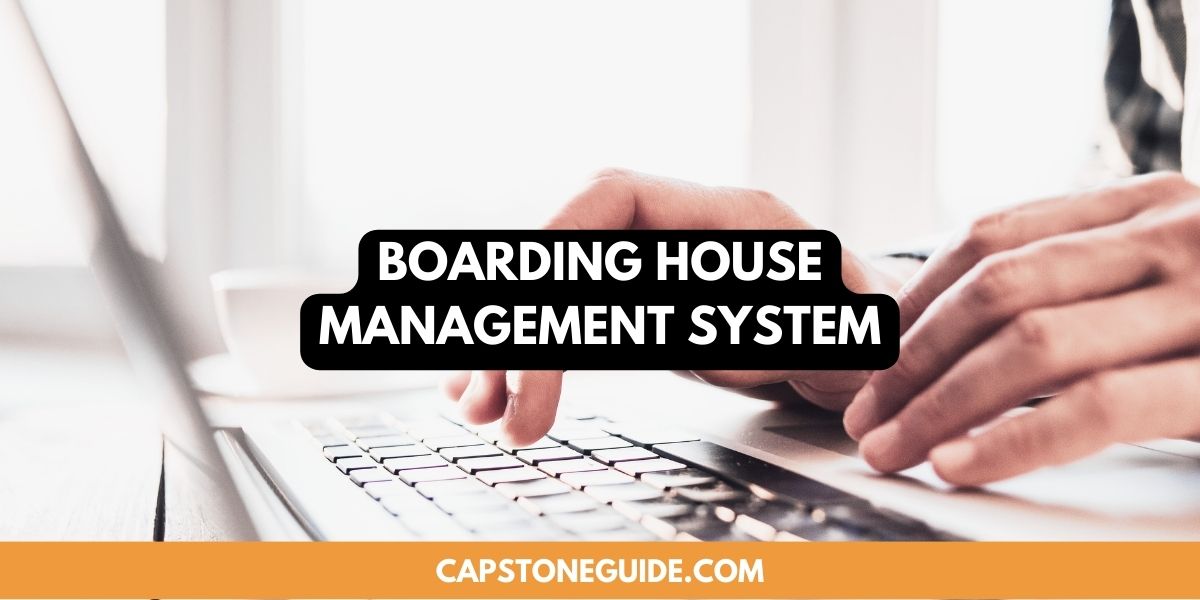


Leave A Comment
You must be logged in to post a comment.